From trees of green and blooming red roses, to the colours of the rainbow and crying babies, it didn’t take much more than nature’s bounty to convince Louis Armstrong that we live in a wonderful world.
Nowhere is that more obvious than in the colourful cone-shaped continent of South America. Boasting lush rainforests, ancient civilisations, and wonderful wildlife, South America is home to a treasure trove of unbelievably awesome spots that will leave your bucket-list looking a lot longer.
From manmade marvels, to mother nature’s wonders, here are five unreal places in South America that will leave your jaw dropped.
Warning: The following images have been known to cause severe wanderlust.
1. Garganta del Diablo, Iguazu Falls, Argentina
Perched at the cross roads of three countries: Argentina, Brazil and Paraguay, the spectacular Iguazu Falls are a must-see for any intrepid explorer venturing into South America.
Spanning two UNESCO protected National Parks, the crashes and roars of the over 275 falls that make up Las Cataratas echo throughout the 55,000 hectares of surrounding rainforest, which are home to a throng of wildlife creatures including tapirs, howler monkeys, caimans and the mighty jaguar.
The name “Iguazu” comes from the Guarani language meaning great water, and while it was renamed to Santa Maria Cascades by Spanish explorers in the 1600’s, it’s clear to see why the name didn’t stick. Tumbling from a towering height of 82 metres against a backdrop of radiant rainbows, the highlight of any trip to the World Heritage Site is the crescent-shaped chasm known as Garganta del Diablo, or Devil’s Throat.
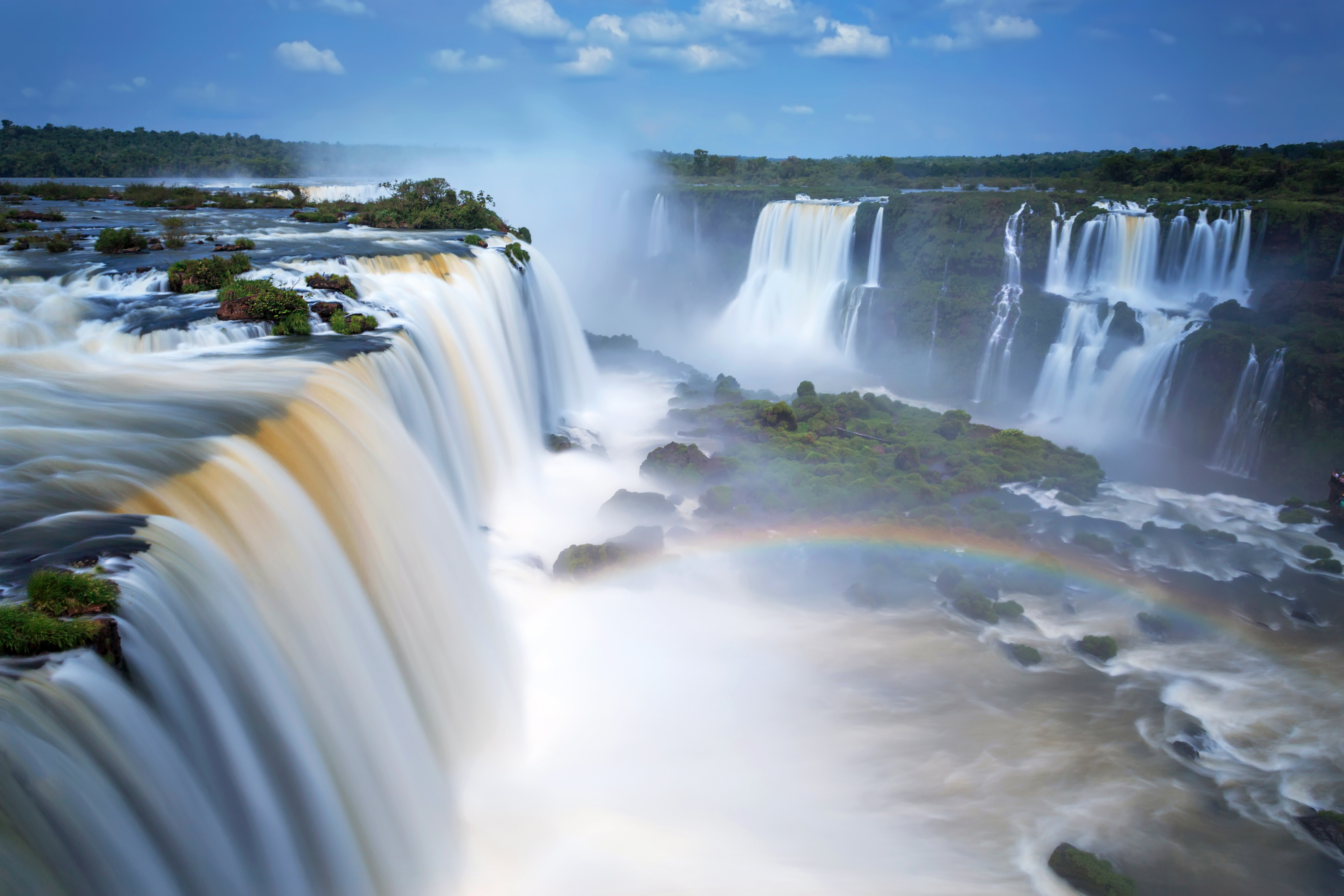
Iguazu Falls, Argentina
Almost twice the height of Niagara Falls and nearly three times its width, here the swirling waters plunge into the placid Rio Iguazu and divide the land into the Argentine province of Misiones and the Brazilian state of Paraná, spraying all selfie-hungry bystanders at the lookout platforms with splashes of the crisp and clear waters, enveloping them in an evocative mist.
The legend of the waterfalls tells the story of an angry deity who each year would demand that the local people sacrifice a virgin to become his wife. In exchange, the God would see that the fresh river waters would continue to flow. One year, a beautiful woman named Naipí,was chosen and set side to become his wife but she already had a mortal lover, a warrior named Tarobá. Choosing love over duty, the two lovers fled in a canoe much to the wrath of the God. Enraged by the act, the deity split the river in two, causing the couple to fall to their deaths.
2. Mano de Desierto, Antofagasto, Chile
Stretching for 105,000 square kilometres along the Pan-American Highway, the remote moonscape of the Atacama Desert is often compared to the terrain of planet Mars.
Renowned as one of the driest places in the world, some areas have never felt a drop of rain – the monotony of the world’s largest non-polar desert is shattered only by an alien sight 75km south of the city of Antofagasta: an 11-metre-tall, iron and cement constructed hand protruding out of the sand called Mano de Desierto.
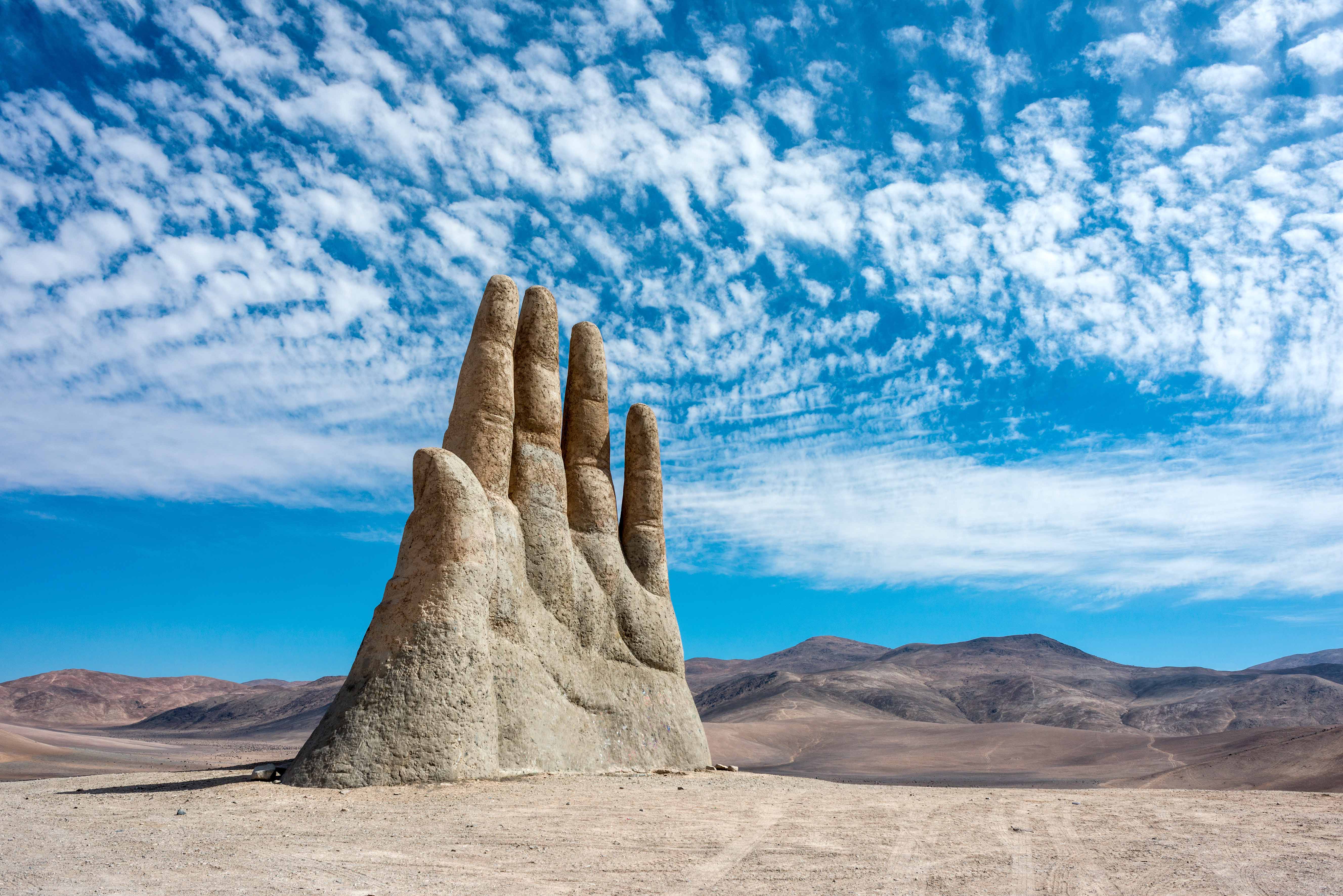
Mano de Desierto, Antofagasto, Chile
The work of Chilean sculptor Mario Irarrázabal, Mano de Desierto is an art installation built in honour of the victims of the brutal Chilean military regime. Rising out of the lifeless plateau, the striking homage represents the loneliness, injustice, human vulnerability and helplessness endured by the innocent.
Funded by Corporación Pro Antofagasta, a local booster organisation, the piece was completed in 1992 and has become a right of passage for any visitor to Chile since.
3. Huacachina, Peru
Crowned the “Oasis of America”, Huacachina is a small desert oasis town surrounded by sand dunes and swaying palm trees in south west Peru, close to the city of Ica.
Appearing like a mirage out of barren hills of sand, Huacachina is home to a handful of residents, but is growing as a tourist attraction drawing in crowds eager to try their hands at sand boarding or dune buggy riding.
Two popular legends dominate the creation of the lagoon. In the first, the lagoon was created when a young hunter startled a beautiful princess who was bathing in the waters. Frightened, she fled, leaving behind her the pool of water she had been bathing in. The woman herself is rumoured to still live in the oasis as a mermaid. In the second, a beautiful young princess mourns the death of her lover. She cried so much at the heart ache that after time, the tears became the lagoon. Composing two Quechua words: wakay meaning “to cry” and china meaning “young woman”, the tale serves as namesake to the Huacachina.
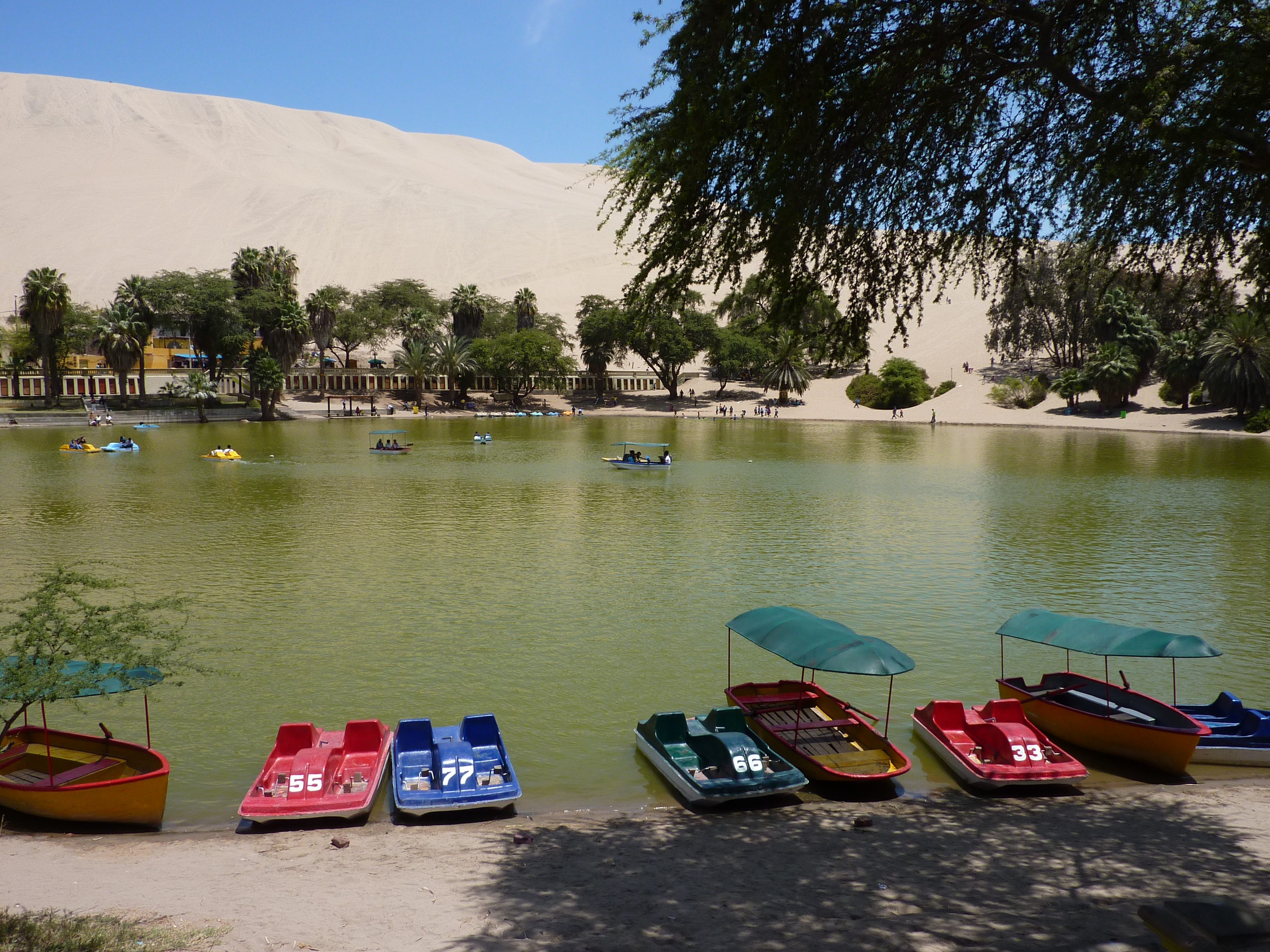
Ica city tour, Huacachina, Peru
4. Machu Picchu, Peru
Recently hailed as the World’s Top Landmark by TripAdvisor and one of the New Seven Wonders of the World, Machu Picchu never fails to disappoint. Often mistakenly referred to the “Lost City of the Incas”, the mammoth monument invites up to 2500 visitors a day.
Shrouded in the mist of the Andes mountains, Machu Picchu is probably the most familiar icon of Inca civilisation, and for most visitors to South America, the ancient citadel is the highlight of their trip.
Standing at 2,430 metres above the spiritual Sacred Valley, around 200 religious, ceremonial, astronomical and agricultural structures interlace with stone terraces to make up the outstanding ruins.
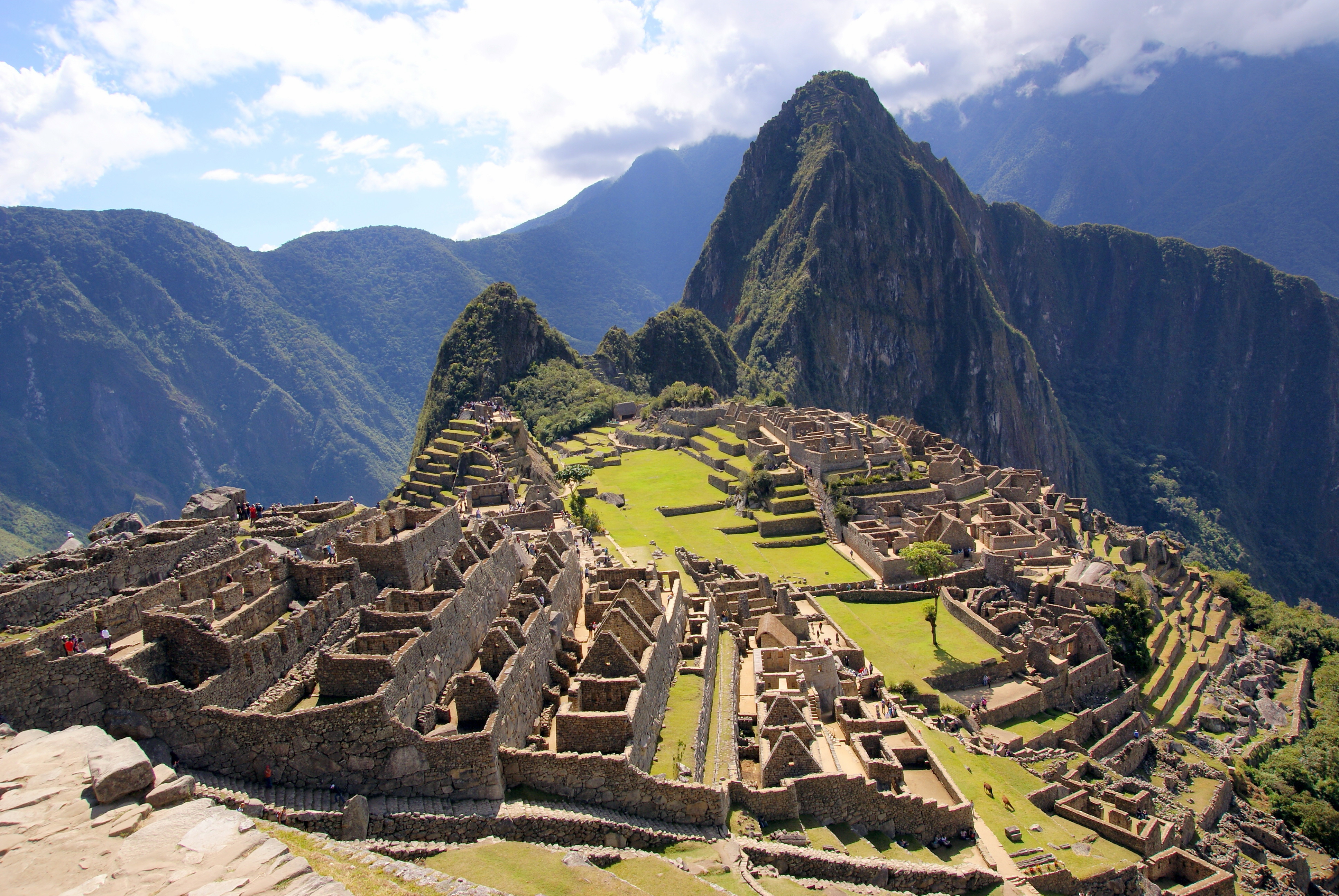
Machu Picchu, Peru
Believed by historians to be an estate built for the emperor Pachacuti at the height of the Incan Empire around 1450 AD, the UNESCO World Heritage Site was abandoned approximately 100 years after its construction, and remained hidden to the rest of the world until it’s discovery by American historian Hiram Bingham in 1911.
5. Salar de Uyuni, Bolivia
Shimmering in seclusion at an altitude of 3653 metres, the savagely beautiful Salar de Uyuni is the world’s largest salt flat located in the state of Potosí in southwest Bolivia.
Near the crest of the Andes, bordering Chile and Argentina, Salar de Uyuni is home to 70% of the world’s lithium reserves, several species of flamingos and an expansive 12,000 sq km of Bolivian landscape.
Formed by the desertification of the prehistoric Lago Minchín, which once covered most of southwest Bolivia, in dry season, blindingly bright salt blankets a seemingly infinite plain of hexagonal tiles, while in wet season the reflective endless terrain draws in hundreds of tourists keen to pose for mirror trick photographs.
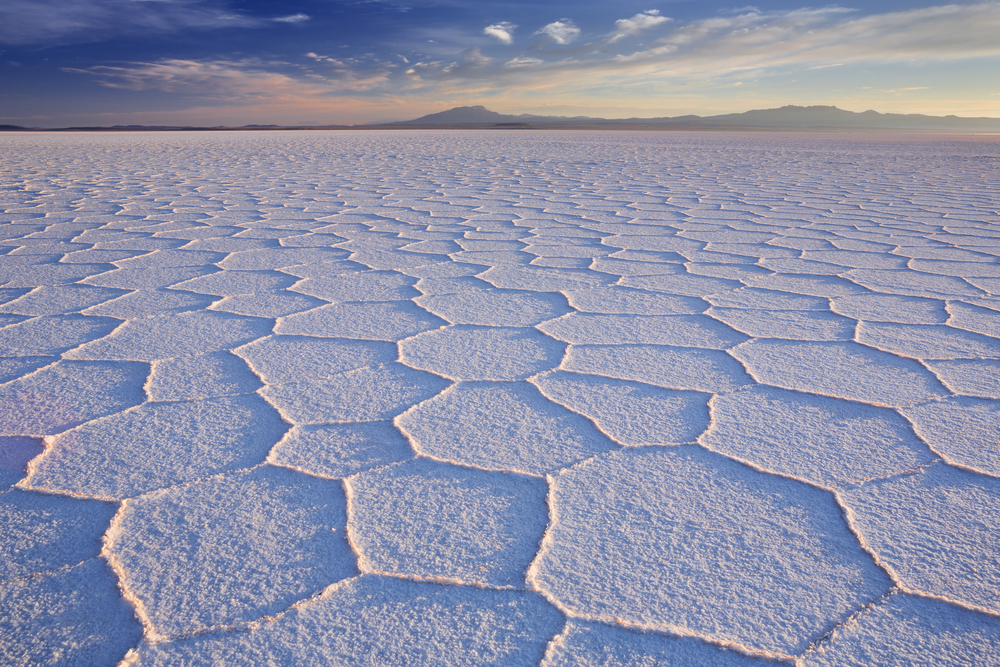
Salar de Uyuni, Bolivia
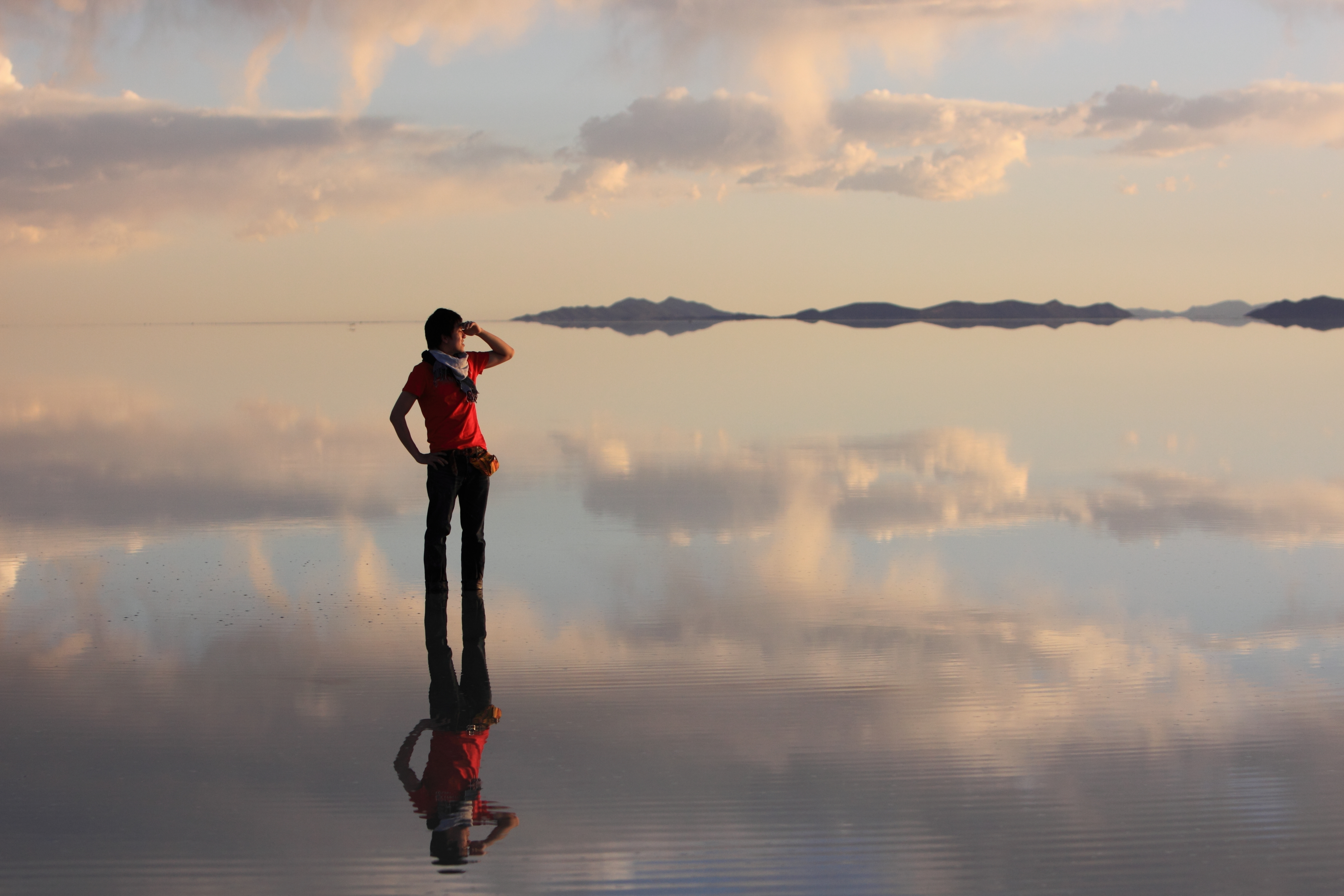
Mirror image on Salar de Uyuni
Sakhita Sharma